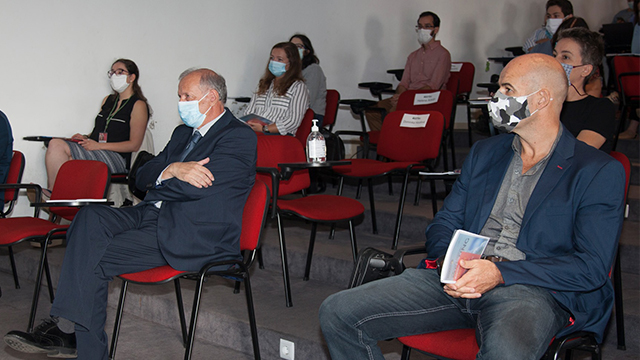- Unit 7 Electricity & Magnetismmr. Mac's 6th Graders
- Unit 7 Electricity & Magnetismmr. Mac's 6th Grader
- Unit 7 Electricity & Magnetismmr. Mac's 6th Grade Language Arts
- Unit 7 Electricity & Magnetismmr. Mac's 6th Grade Ngss
What is the unit for electric current? What is voltage difference? What is the unit for voltage difference? What is a circuit? What is resistance? What is the unit for resistance? List the 3 ways to increase resistance. What is Ohm’s Law? Explain how a light bulb produces light (same way it produces heat!).

FREE K-12 standards-aligned STEM
- The unit of electrical charge is the coulomb (symbol: C). Electrical current An electrical current is the movement of negative electrical charges (electrons) through a conductor (electrical wire, metal foil, etc.). In an electrical circuit, the current flows from the point where the electrical potential is highest to the point where.
- It is a logarithmic unit expressed in dB and is commonly used to represent the ratio of input to output in amplifier, audio circuits or loudspeaker systems. For example, the dB ratio of an input voltage (V IN ) to an output voltage (V OUT ) is expressed as 20log 10 (Vout/Vin).
- Farad is the unit of capacitance. It represents the amount of electric charge in coulombs that is stored per 1 volt. Henry (H) Henry is the unit of inductance. Siemens (S) siemens is the unit of conductance, which is the opposite of resistance. Coulomb (C) Coulomb is the unit of electric charge.
curriculum for educators everywhere!
Find more at TeachEngineering.org.
Quick Look
Grade Level: 4 (3-5)
Choose From: 6 lessons and 11 activities
Subject Areas: Physical Science
Summary
Uncountable times every day—with the merest flick of a finger—each one of us calls on electricity to do our bidding. What would your life be like without electricity? Students begin learning about electricity with an introduction to the most basic unit in ordinary matter, the atom. Once the components of an atom are addressed and understood, students move into the world of electricity. First, they explore static electricity, followed by basic current electricity concepts such as voltage, resistance and open/closed circuits. Next, they learn about that wonderful can full of chemicals—the battery. Students may get a 'charge' as they discover the difference between a conductor and an insulator. The unit concludes with lessons investigating simple circuits arranged 'in series' and 'in parallel,' including the benefits and unique features associated with each. Through numerous hands-on activities, students move cereal and foam using charged combs, use balloons to explore electricity and charge polarization, build and use electroscopes to evaluate objects' charge intensities, construct simple switches using various materials in circuits that light bulbs, build and use simple conductivity testers to evaluate materials and solutions, build and experiment with simple series and parallel circuits, design and build their own series circuit flashlight, and draw circuits using symbols.Engineering Connection
Electrification is FIRST on the list of the National Academy of Engineering's top 20 engineering achievements of the 20th century (see http://www.greatachievements.org/). After Edison's 1879 invention of the light bulb, electrification boosted America's economic development and quality of life, soon becoming pervasive in both urban and rural communities to provide lighting, power for home appliances, and in later years, computers and communication devices, as well as the widespread production of goods and services.
If electricity is the workhorse of the modern world, then engineers hold the reins. Beginning with their understanding of atoms and electrons, engineers exploit scientific principles of voltage, current and resistance to create the circuitry and batteries found in electronic devices. They create circuit diagrams to communicate their designs to others. Over the years, and continuing today, engineers invent new equipment, tools and products that use electricity and provide capabilities for people, including electronics, radio, TV, household appliances, telephones, refrigeration, air conditioning, computers, internet, imaging, health technologies, laser and fiber optics, spacecraft.
We now demand so much electricity that engineers are asked to invent new ways to conserve it and generate it, for example, the invention of photovoltaic cells that use sunlight to make electricity. Through the smart use of materials, for their conductivity and insulating characteristics, engineers design devices and appliances that operate correctly, dependably and safely. Engineers are creative with their inventions; using static electricity, engineers devised industrial air filters that clean the air. The engineering design of integrated circuits combines thousands to millions of parallel and series circuits working together. The resulting central processing units (CPUs) have become essential in modern vehicles, video games, smoke detectors, DVD players, garage-door openers, cordless phones, clocks and calculators—useful devices and inventions that improve our lives.
Unit Overview
Overview of topics by lesson: 1) introduction to electricity, both static and current, as well as electrons and atoms, 2) static electricity, including inducing electrical charge, repulsion and attraction, 3) current electricity, including voltage, current and resistance, 4) electrical conductors and insulators, including material properties, 5) series circuits, including resistance and circuit components, and 6) the composition and practical application of parallel circuits, including Ohm's law.
Educational Standards Each TeachEngineering lesson or activity is correlated to one or more K-12 science, technology, engineering or math (STEM) educational standards.
All 100,000+ K-12 STEM standards covered in TeachEngineering are collected, maintained and packaged by the Achievement Standards Network (ASN), a project of D2L (www.achievementstandards.org).
In the ASN, standards are hierarchically structured: first by source; e.g., by state; within source by type; e.g., science or mathematics; within type by subtype, then by grade, etc.
Each TeachEngineering lesson or activity is correlated to one or more K-12 science, technology, engineering or math (STEM) educational standards.
All 100,000+ K-12 STEM standards covered in TeachEngineering are collected, maintained and packaged by the Achievement Standards Network (ASN), a project of D2L (www.achievementstandards.org).
In the ASN, standards are hierarchically structured: first by source; e.g., by state; within source by type; e.g., science or mathematics; within type by subtype, then by grade, etc.
See individual lessons and activities for standards alignment.
Unit Schedule
- Day 1: Lights Out! lesson
- Day 2: Static Cling activity
- Day 3: Take Charge! All About Static Electricity lesson
- Day 4: Charge It! All About Electrical Attraction and Repulsion activity and Build a Charge Detector activity
- Day 5: Electrons on the Move lesson
- Day 6: Completing the Circuit activity
- Day 7: Two-Cell Battery activity
- Day 8: Go with the Flow lesson
- Day 9: Will It Conduct? activity
- Day 10: Materials Switcheroo: Construct Simple Electrical Switches activity
- Day 11: Circuits: One Path for Electricity lesson
- Day 12: Bulbs & Batteries in a Row activity
- Day 13: Light Your Way: Design-Build a Series Circuit Flashlight activity
- Day 14-15: Build a Toy Workshop activity
- Day 16: Parallel Circuitry & Ohm’s Law: Many Paths for Electricity lesson
- Day 17: Bulbs & Batteries Side by Side activity
Worksheets and Attachments
Visit [www.teachengineering.org/curricularunits/view/cub_electricity_curricularunit] to print or download.Assessment
Pre-Unit Test: To conduct an overall pre/post content assessment of this curricular unit (six lessons, with associated activities), administer the attached Electricity and Magnetism Pre/Post Test to the class before beginning any discussion on electricity and magnetism. A Spanish version is also available: Electricidad y Manetismo Pre/Post Test. Then, after completion of the final lesson, administer the same (now post-unit) test to the same students and compare pre- to post- scores. In addition, this short test is suitable to administer to a control group of students who have not completed the unit, to comparatively test the impact of the curricular unit on learning. This test was developed by a TE user of this curricular unit.
Post-Unit Test: If you administered the pre-unit test before beginning this curricular unit, conclude the overall pre/post assessment of the unit (six lessons, with associated activities), by administering the Electricity and Magnetism Pre/Post Test to the class after concluding the final lesson and its activity. A Spanish version is also available: Electricidad y Manetismo Pre/Post Test. Compare pre- to post- scores to gauge the impact of the curricular unit on students' learning.
Copyright
© 2004 by Regents of the University of ColoradoContributors
See individual lessons and activities.Supporting Program
Integrated Teaching and Learning Program, College of Engineering, University of Colorado BoulderAcknowledgements
The contents of this digital library curriculum were developed under grants from the Fund for the Improvement of Postsecondary Education (FIPSE), U.S. Department of Education and the National Science Foundation (GK-12 grant no. 0338326). However, these contents do not necessarily represent the policies of the Department of Education or National Science Foundation, and you should not assume endorsement by the federal government.
Last modified: January 1, 2021
Find more at TeachEngineering.org
Big Ideas
The electromagnetic force produces both electricity and magnetism.
Concepts
- Impact
- Force
- Cause/effect
Essential Questions
Evaluative Criteria
Teachers should consider how summative assessments should be based on clear criteria and include a variety of ways for students to show demonstrate their learning.
- N/A
Monitoring Progress
Teacher will monitor progress:
Teachers can monitor progress through ongoing formative assessment including but not limited to:
- N/A
Resources
Reflection
How will teachers and their students reflect on and evaluate the completed project?
Teacher Reflection
- What aspects of the unit went well
- What did students struggle with
- What did you struggle with?
- What would you add/revise the next time you taught this unit?
- Were there any unintended outcomes?
- Were students engaged?
Downloads
Subject
Topic
Unit Overview
In this unit, students will learn about electricity and magnetism.
Grade
Unit Duration
Related Big Ideas
The following resources are made available through the British Columbia Ministry of Education. For more information, please visit BC’s New Curriculum.
Big Ideas
Unit 7 Electricity & Magnetismmr. Mac's 6th Graders
The Big Ideas consist of generalizations and principles and the key concepts important in an area of learning. The Big Ideas represent what students will understand at the completion of the curriculum for their grade. They are intended to endure beyond a single grade and contribute to future understanding.
Core Competencies
Communications Competency
The set of abilities that students use to impart and exchange information, experiences and ideas, to explore the world around them, and to understand and effectively engage in the use of digital media
Thinking Competency
Unit 7 Electricity & Magnetismmr. Mac's 6th Grader
The knowledge, skills and processes we associate with intellectual development
Social Competency
The set of abilities that relate to students’ identity in the world, both as individuals and as members of their community and society
Curricular Competencies & Content

Curricular Competencies are the skills, strategies, and processes that students develop over time. They reflect the “Do” in the Know-Do-Understand model of curriculum. The Curricular Competencies are built on the thinking, communicating, and personal and social competencies relevant to disciplines that make up an area of learning.
Unit 7 Electricity & Magnetismmr. Mac's 6th Grade Language Arts
First People's Principles of Learning
To read more about First People’s Principles of Learning, please click here.
Unit 7 Electricity & Magnetismmr. Mac's 6th Grade Ngss
For classroom resources, please visit the First Nations Education Steering Committee.
